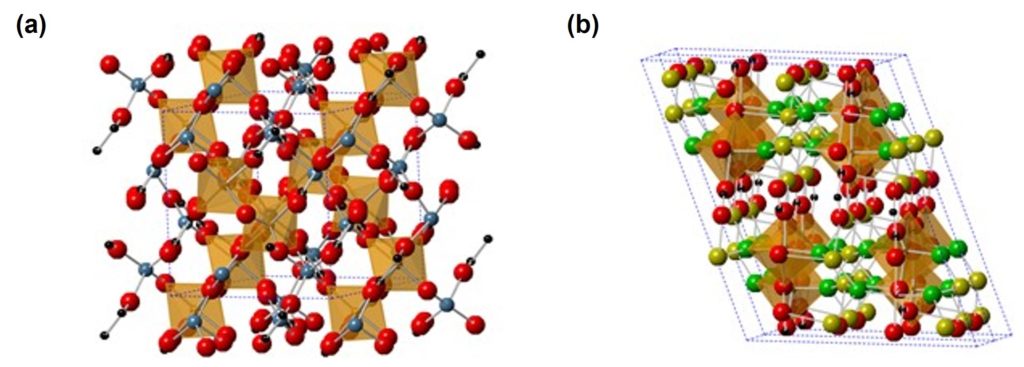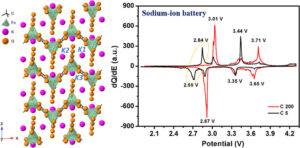Oxalate-based Cathodes
Polyoxyanion compounds (e.g. sulfates and phosphates) are receiving considerable interest as alternative cathodes to the conventional oxides. The strong binding of the oxygen in polyoxyanions enhances stability and thus safety, compared with layered transition metal oxides. The electronic inductive effect shifts the d-states of the transition metal ions and hence the redox potentials, providing a means of tuning the latter. Phosphate materials, particularly LiFePO4, are the most widely studied of these materials and are now widely used in power tools. In the search for new cathode materials our group has developed TM oxalates as potential cathode materials for NIB/LIBs. Oxalic acid is a relatively strong acid, intermediate between H2SO4 and H3PO4. This implies that the electronic inductive effect on the d-states of the TM ions of oxalate group should be analogous to (SO4)2− and (PO4)3−. As a result, oxalate shows a similar range of redox potentials. Additionally, its conjugate base, (C2O4)2−, is a versatile anion that can readily co-ordinate with the metal centres via oxygen atoms. Being a multidentate ligand (monodentate, bidentate, tridentate, or tetradentate), oxalate anions form chains, layers, or three-dimensional structures. As a result of these advantages of oxalates our group has recently developed oxalate based (e.g., Na2Fe2(C2O4)3·2H2O, Na2Fe(C2O4)F2, and Li2Fe(C2O4)2) polyanionic cathodes for NIB/LIB application. We recently reported dual ion redox in the lithium iron oxalate, Li2Fe(C2O4)2 in which both the iron and the oxalate group appear to exhibit reversible redox activity.1 Our subsequent results suggest that this phenomenon is by no means unique to this compound and is quite widespread among transition metal oxalates.

Representative publications
